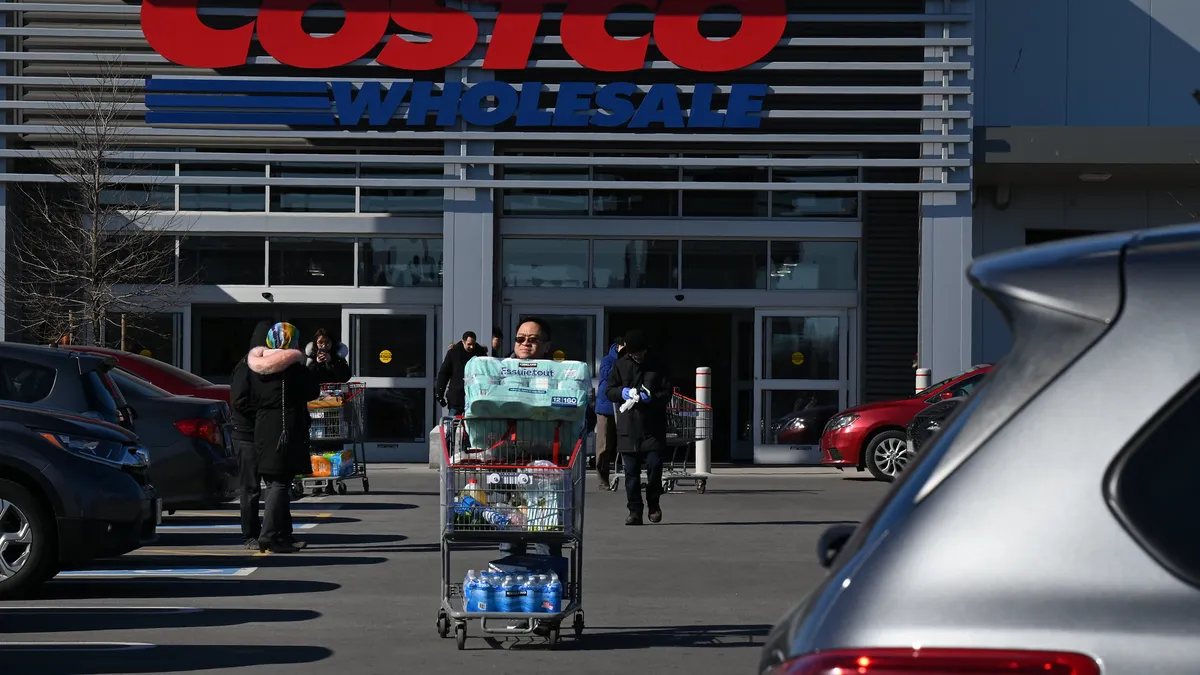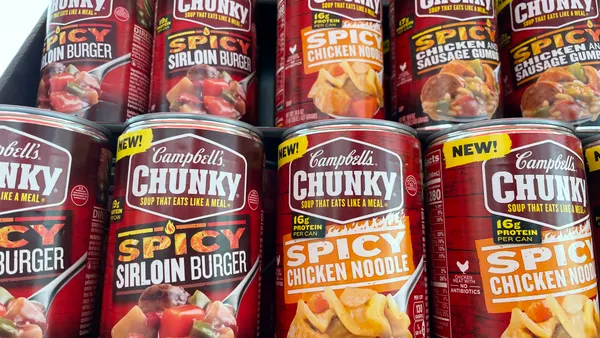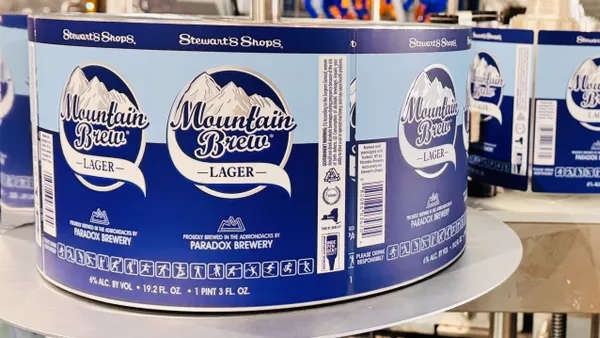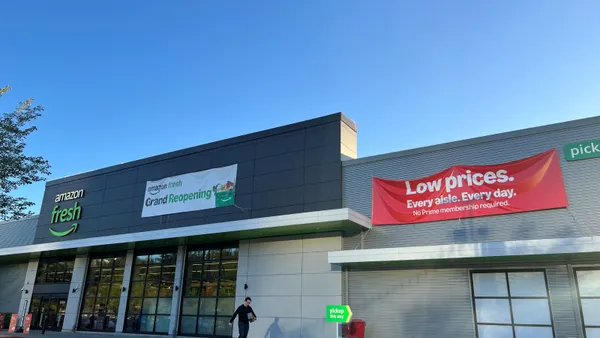Dive Brief:
- While consumers are still largely shopping in stores during the coronavirus pandemic, 69% of them are purchasing different brands if their preferred one is not available, according to a survey by shopping rewards app Shopkick. Only 14% said they will not make a purchase if their preferred brand is unavailable.
- Shopping trips have become less frequent for 72% of consumers, but those trips have become more expensive, with 39% of consumers reporting spending more money per shopping trip than before the COVID-19 outbreak. The average cost per trip for 39% of shoppers is $51 to $100. Thirty percent of people spend $26 to 50, 18% ring up at $100 to 200, and 13% spend $25 or less.
- Supply chain software provider BlueYonder found 87% of consumers found out-of-stocks at their local grocery stores. Almost four out of five said if their preferred brand were out of stock, they would go to buy it at another store or they would purchase another brand.
Dive Insight:
Whether shopping online or in store, Americans are faced with aisles of out-of-stock products as millions compete to stock up households with essentials. Shoppers were unable to find 40% of the grocery items on their shopping list, according to a March 23 survey of 3,000 consumers by meal planning service eMeals.
The new data from the Shopkick survey of 26,000 consumers support its previous findings, which found 85% of respondents say brand names do not matter during times of crisis. BlueYonder's 1,000-person study also reinforces this conclusion.
The result is that consumers are showing an overwhelming preference for product availability rather than brand loyalty. And, according to a survey of 1,006 consumers between March 27-31 by Alix Partners, 30% to 45% of consumers who have tried a new national brand during the pandemic say they would be willing to stick with it when things go back to normal. For those who tried private label brands, 25% to 30% will continue buying them, the survey says.
This new version of normal should have big brands on their toes. As plant closures across the United States have been disrupting the food supply chain and straining companies to fulfill demand, it is becoming increasingly hard for companies to compete when their products just aren’t there.
While in-store purchases are limited to what is on the shelf and may favor smaller brands that aren’t the first to be picked up, e-commerce is offering another solution. Mondelez said it was seeing “unprecedented demand” online for its snacks during the coronavirus quarantine. In order to provide access to familiar brands like Triscuit, Oreo and Ritz, the snacking company is simplifying its portfolio to prioritize offerings such as bigger pack formats.
However, the Shopkick survey shows e-commerce does not constitute the majority of shopping trips for Americans. As such, the brands that are readily available on grocery store shelves will be those that consumers select. With little discretion about what they want to buy, consumers will discover new brands that will not only suffice, but may even become new household favorites. If big brands are unable to keep shelves stocked at brick-and-mortar retailers, there is a chance that the brand loyalty they have cultivated for decades will dwindle.
The good news for all food makers is the forced quarantine has led to more evenings of homecooked meals. eMeals noted people are cooking dinner at home an average of six nights a week, a contrast compared to a 2018 survey that showed the average household only cooked 3.8 weekly dinners at home. Of those who are cooking, 57% are trying to make simple meals with more basic ingredients while making use of items already in their pantries and freezers.
Shopkick’s survey went deeper and found that by cooking at home, consumers are trying to stretch their dollars. Forty-six percent of consumers are using shopping rewards apps and 42% are using couponing apps.
Brands could take advantage of this money-saving trend and offer promotions and marketing campaigns designed to push shoppers toward their items. Although the initial up-front cost may be off-putting in a time where finances are suffering as a consequence of restaurant and foodservice closures, the investment could pay off in the long term by keeping brand names in front of consumers in a way that helps them save money in a stressful time. The odds are consumers will be thankful.














